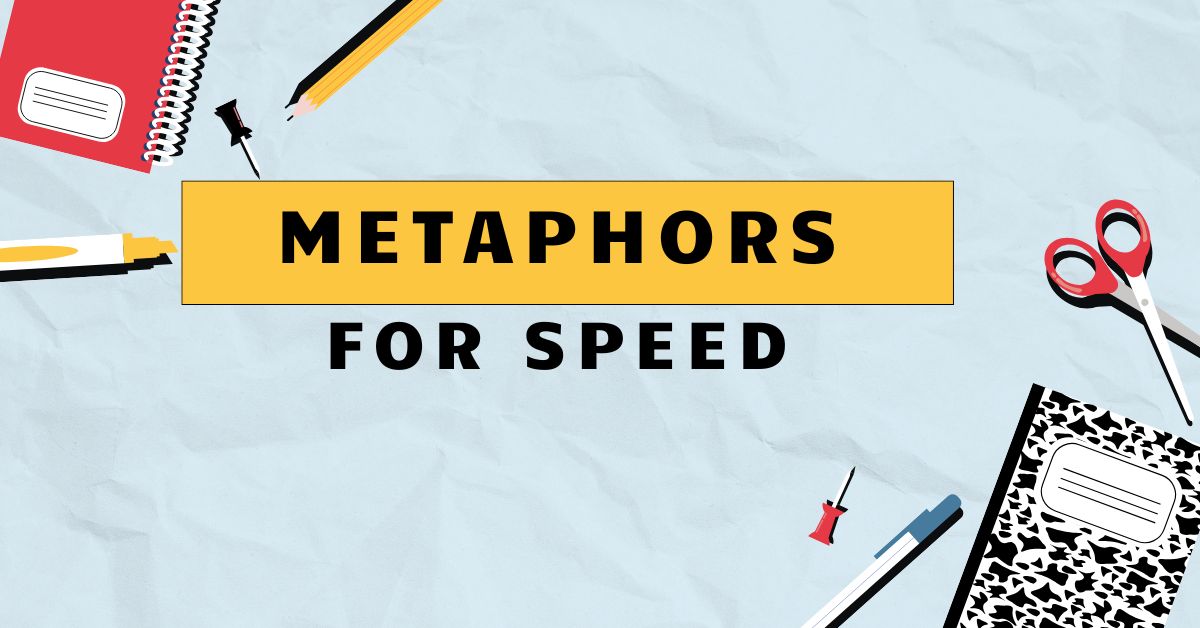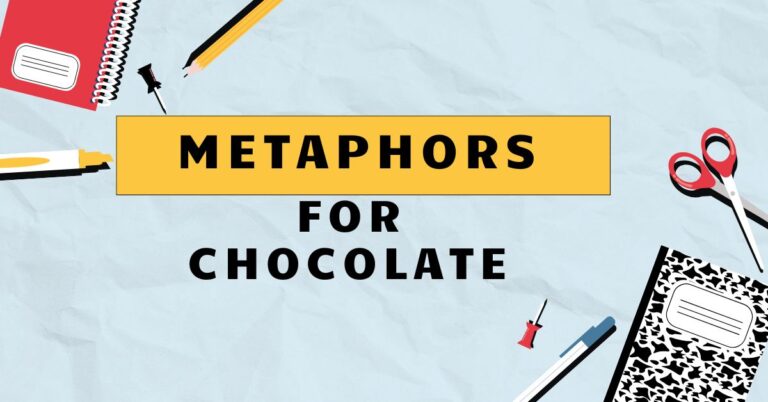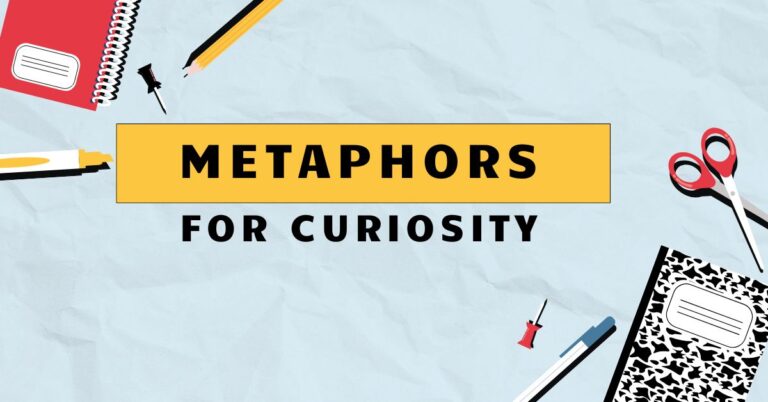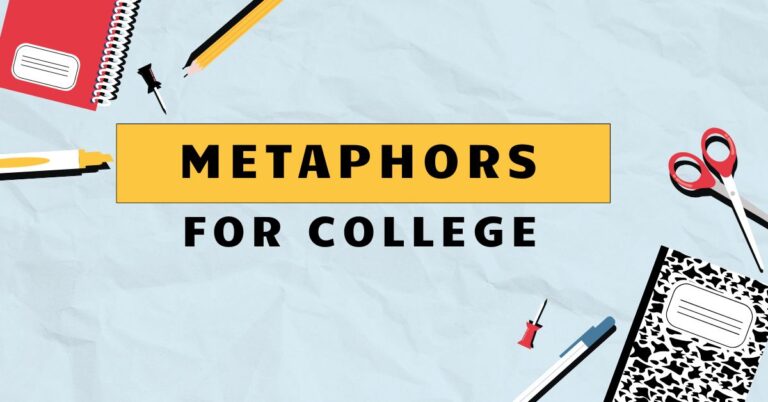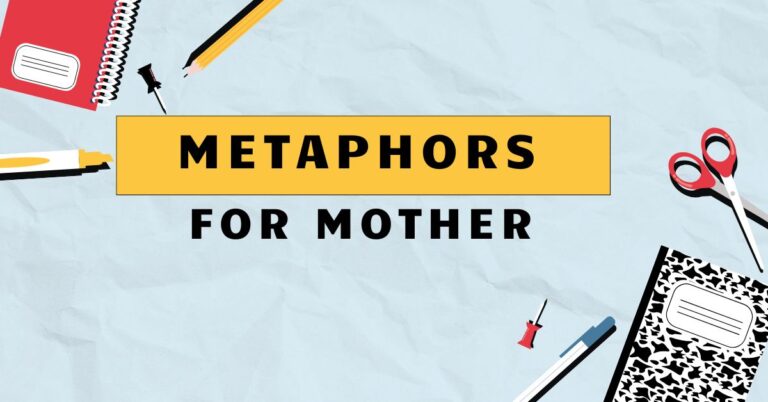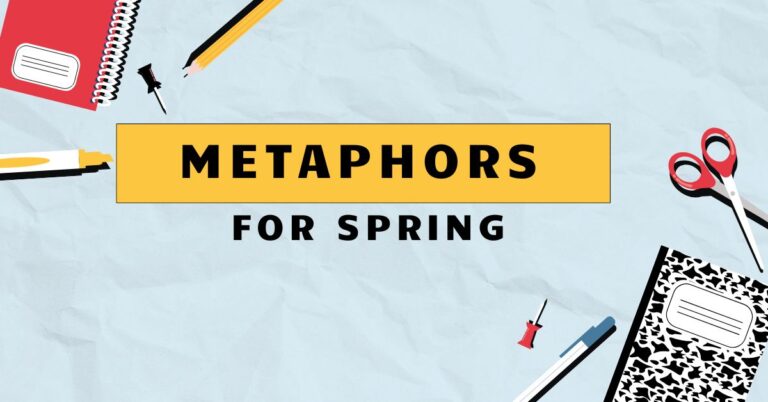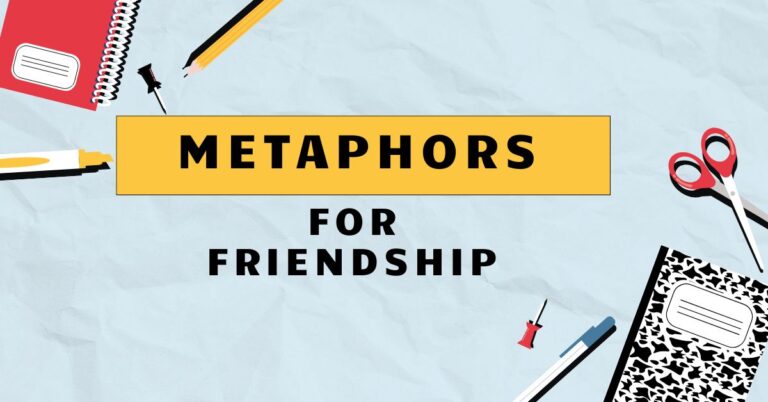33 Metaphors for Speed: Describing Fast Running in English
Understanding metaphors is crucial for mastering the nuances of the English language. Metaphors allow us to express complex ideas in vivid and relatable ways, making our communication more engaging and impactful.
This article focuses on metaphors used to describe fast running, a common and dynamic theme in both everyday conversation and literature. By exploring these metaphors, learners can enhance their vocabulary, comprehension, and expressive abilities.
This guide is designed for English language learners of all levels, from beginners looking to expand their vocabulary to advanced speakers aiming to refine their figurative language skills.
Whether you’re a student, a teacher, or simply someone interested in improving your English, this article provides a comprehensive overview of metaphors for fast running. We will cover the definition, structure, types, usage rules, common mistakes, and provide numerous examples and practice exercises to solidify your understanding.
Get ready to sprint through the world of figurative language and discover the power of metaphors!
Table of Contents
- Definition of Metaphor
- Structural Breakdown of Metaphors
- Types of Metaphors for Running Fast
- Examples of Metaphors for Running Fast
- Usage Rules for Metaphors
- Common Mistakes When Using Metaphors
- Practice Exercises
- Advanced Topics in Metaphorical Language
- Frequently Asked Questions
- Conclusion
Definition of Metaphor
Ametaphoris a figure of speech that directly compares two different things by stating that one thingisanother. Unlike similes, which use “like” or “as” to make comparisons, metaphors create a more direct and implicit connection.
The purpose of a metaphor is to transfer qualities or characteristics from one concept to another, thereby creating a new understanding or perspective. This transfer of meaning allows us to describe something in a more vivid, imaginative, and relatable way.
In essence, a metaphor allows us to see the world through a different lens, enriching our understanding and making our language more expressive. It’s a powerful tool used extensively in literature, poetry, everyday conversation, and even scientific discourse.
Understanding metaphors is essential for interpreting nuanced meanings and appreciating the artfulness of language. Metaphors can be categorized based on their structure or the type of comparison they make.
Metaphors are pervasive in the English language and beyond. They are not merely decorative elements but fundamental cognitive tools that shape our understanding of the world.
By understanding how metaphors work, we can become more effective communicators and more insightful interpreters of language.
Structural Breakdown of Metaphors
Metaphors consist of two primary elements: thetenor(or subject) and thevehicle. The tenor is the subject being described, while the vehicle is the object or concept used to describe it.
The connection between the tenor and the vehicle is theground, which represents the shared characteristics or qualities that make the comparison meaningful. Understanding these components is essential for analyzing and constructing effective metaphors.
Let’s consider the metaphor “He is a cheetah on the track.” Here, “he” is the tenor (the runner), “cheetah” is the vehicle (the animal known for speed), and the ground is the shared quality of speed and agility. The metaphor works because cheetahs are renowned for their incredible speed, and this attribute is transferred to the runner, implying that he is exceptionally fast.
The effectiveness of a metaphor often depends on how well the audience understands the vehicle and its associated qualities.
Another important aspect of metaphor construction is the concept ofextended metaphors. An extended metaphor is a metaphor that is sustained over several lines or even an entire work.
It allows for a more detailed and nuanced exploration of the comparison, enriching the reader’s understanding and creating a more profound impact. Recognizing the structural elements of metaphors enables us to appreciate their complexity and use them more effectively in our own communication.
Types of Metaphors for Running Fast
Metaphors for running fast can be categorized based on the type of comparison they make. These categories often involve comparisons to animals, vehicles, natural phenomena, and abstract qualities.
Each category brings a unique set of associations and connotations, allowing for a wide range of expressive possibilities.
Animal Comparisons
Animal comparisons are common metaphors for describing speed. Animals known for their swiftness, such as cheetahs, rabbits, and eagles, are frequently used to characterize fast runners.
These metaphors evoke images of agility, power, and natural speed.
For example, saying someone “runs like a cheetah” immediately conveys the idea of incredible speed and grace. The specific animal chosen can also add further nuance to the description, such as comparing someone to a “greyhound” to suggest sleekness and efficiency.
Vehicle Comparisons
Vehicle comparisons use modes of transportation to describe fast running. Cars, trains, and rockets are often employed to convey the idea of speed, power, and momentum.
These metaphors can suggest a sense of unstoppable force and technological prowess.
Describing a runner as “a speeding bullet” or “a runaway train” emphasizes their velocity and the difficulty of stopping them. The choice of vehicle can also add a layer of meaning, such as using “rocket” to suggest explosive acceleration.
Natural Phenomena
Natural phenomena such as wind, lightning, and storms can also be used as metaphors for fast running. These comparisons invoke images of natural forces, conveying a sense of power, unpredictability, and raw energy.
Saying someone “runs like the wind” suggests effortless speed and freedom. Using “lightning” implies sudden bursts of speed and electrifying performance.
These metaphors often convey a sense of awe and wonder.
Abstract Qualities
Abstract qualities like time, light, and energy can be used metaphorically to describe fast running. These metaphors often focus on the feeling or impact of the speed rather than a direct comparison to a physical object or entity.
Describing a runner as “a blur of motion” emphasizes the speed and difficulty of perceiving them clearly. Saying they “move like a dream” suggests an ethereal and almost unreal quality to their speed.
These metaphors can be particularly evocative and imaginative.
Examples of Metaphors for Running Fast
This section provides a comprehensive list of metaphors for running fast, categorized by the types discussed above. Each table includes numerous examples to illustrate the diverse ways in which metaphors can be used to describe speed.
The following table presents examples of animal comparisons used as metaphors for fast running. Notice how each animal brings a unique connotation to the description.
| Category | Metaphor | Explanation |
|---|---|---|
| Animal | He runs like a cheetah. | Implies incredible speed and agility. |
| Animal | She’s a gazelle on the track. | Suggests gracefulness and swiftness. |
| Animal | He moves like a hare. | Indicates quick, darting movements. |
| Animal | She’s a greyhound in the race. | Conveys sleekness and efficiency. |
| Animal | He runs as fast as a startled deer. | Highlights sudden and rapid acceleration. |
| Animal | She’s like a roadrunner, always on the move. | Suggests tireless energy and speed. |
| Animal | He bolted like a frightened rabbit. | Implies a sudden burst of speed due to fear. |
| Animal | She sprinted like a falcon diving for prey. | Conveys incredible speed and focus. |
| Animal | He was a whirlwind of motion, like a Tasmanian devil. | Suggests chaotic and unstoppable speed. |
| Animal | She glided across the field like a swan on water. | Conveys effortless and graceful speed. |
| Animal | He charged forward like a rhino. | Implies powerful and unstoppable speed. |
| Animal | She was as quick as a hummingbird. | Highlights rapid and precise movements. |
| Animal | He leaped like a frog, covering great distances. | Suggests explosive and powerful jumps. |
| Animal | She darted through the crowd like a minnow in a stream. | Conveys agility and quickness in tight spaces. |
| Animal | He galloped like a wild horse across the plains. | Implies untamed and boundless speed. |
| Animal | She was a blur of feathers, like a hummingbird in flight. | Suggests rapid and almost imperceptible movement. |
| Animal | He moved like a snake, slithering through the competition. | Conveys agility and stealth. |
| Animal | She was as swift as an arrow shot from a bow, like a hunting eagle. | Highlights speed and accuracy. |
| Animal | He ran with the speed of a peregrine falcon diving. | Implies incredible speed and precision. |
| Animal | She flowed like a river, unstoppable and swift. | Suggests smooth and continuous speed. |
| Animal | He pounced like a panther, quick and decisive. | Conveys agility and predatory instinct. |
| Animal | She ran with the grace of a deer. | Implies elegance and swiftness. |
| Animal | He scurried like a squirrel, quick and nimble. | Suggests rapid and agile movements. |
| Animal | She was as light as a feather, floating across the track. | Conveys effortless and graceful speed. |
| Animal | He charged like a bull, unstoppable and fierce. | Implies raw power and speed. |
The next table showcases examples of vehicle comparisons used as metaphors for running fast. These metaphors often convey a sense of power and momentum.
| Category | Metaphor | Explanation |
|---|---|---|
| Vehicle | He’s a speeding bullet on the track. | Emphasizes velocity and directness. |
| Vehicle | She’s a runaway train, unstoppable. | Suggests immense momentum and force. |
| Vehicle | He took off like a rocket. | Indicates explosive acceleration. |
| Vehicle | She’s a human dynamo, full of energy. | Conveys tireless energy and speed. |
| Vehicle | He’s a jet plane soaring through the air. | Implies smooth and rapid movement. |
| Vehicle | She moved like a race car, hugging the curves. | Suggests precision and speed. |
| Vehicle | He was a freight train, barreling down the track. | Conveys immense power and momentum. |
| Vehicle | She accelerated like a sports car. | Implies rapid and stylish speed. |
| Vehicle | He’s a speedboat cutting through the water. | Suggests agility and speed. |
| Vehicle | She zipped by like a motorcycle. | Conveys quickness and agility. |
| Vehicle | He powered forward like a bulldozer. | Implies unstoppable force. |
| Vehicle | She flew past like a drone. | Suggests effortless and rapid movement. |
| Vehicle | He was a tractor plowing through the field. | Conveys steady and powerful progress. |
| Vehicle | She raced like a formula one car. | Implies extreme speed and precision. |
| Vehicle | He launched like a space shuttle. | Suggests incredible acceleration and power. |
| Vehicle | She was a whirlwind, like a helicopter taking off. | Conveys chaotic and rapid movement. |
| Vehicle | He moved like a bicycle, steady and efficient. | Implies consistent and reliable speed. |
| Vehicle | She was a hovercraft, gliding effortlessly. | Suggests smooth and frictionless movement. |
| Vehicle | He cruised like a yacht, smooth and powerful. | Conveys graceful and controlled speed. |
| Vehicle | She sped off like a scooter, quick and nimble. | Implies agility and rapid acceleration. |
| Vehicle | He was a locomotive, gaining momentum with every stride. | Suggests increasing power and speed. |
| Vehicle | She dashed like a taxi through city streets. | Conveys quickness and agility in a crowded environment. |
| Vehicle | He accelerated like an electric car, silently but swiftly. | Implies rapid and noiseless speed. |
| Vehicle | She was a snowmobile tearing through the snow. | Suggests powerful and unstoppable movement. |
| Vehicle | He marched forward like a tank, impervious to obstacles. | Conveys unwavering power and speed. |
This table provides examples of natural phenomena used as metaphors for running fast. These often convey a sense of raw power and unpredictability.
| Category | Metaphor | Explanation |
|---|---|---|
| Natural Phenomenon | He runs like the wind. | Suggests effortless speed and freedom. |
| Natural Phenomenon | She’s a bolt of lightning on the track. | Implies sudden, electrifying speed. |
| Natural Phenomenon | He moves like a hurricane. | Indicates overwhelming power and speed. |
| Natural Phenomenon | She flowed like a river. | Conveys smooth, continuous speed. |
| Natural Phenomenon | He rushed forward like a tidal wave. | Implies unstoppable force and momentum. |
| Natural Phenomenon | She was as swift as a summer breeze. | Suggests effortless and gentle speed. |
| Natural Phenomenon | He surged ahead like a volcanic eruption. | Conveys explosive power and speed. |
| Natural Phenomenon | She darted like a shooting star. | Implies rapid and fleeting movement. |
| Natural Phenomenon | He zoomed like a sunbeam across the sky. | Suggests quick and radiant speed. |
| Natural Phenomenon | She swept past like a dust devil. | Conveys chaotic and rapid movement. |
| Natural Phenomenon | He powered through like an avalanche. | Implies overwhelming force and speed. |
| Natural Phenomenon | She glided like a snowflake. | Suggests effortless and graceful movement. |
| Natural Phenomenon | He accelerated like a thunderclap. | Conveys sudden and powerful speed. |
| Natural Phenomenon | She raced like a waterfall. | Implies continuous and powerful flow. |
| Natural Phenomenon | He flew like a comet. | Suggests rapid and brilliant speed. |
| Natural Phenomenon | She was a tornado, spinning with incredible velocity. | Conveys chaotic and destructive speed. |
| Natural Phenomenon | He sprinted like a flash flood. | Implies sudden and overwhelming speed. |
| Natural Phenomenon | She dashed like a meteor across the night sky. | Suggests rapid and breathtaking speed. |
| Natural Phenomenon | He moved like molten lava, unstoppable and relentless. | Conveys powerful and unwavering speed. |
| Natural Phenomenon | She was as swift as a shadow passing over the ground. | Suggests quick and subtle speed. |
| Natural Phenomenon | He erupted like a geyser, bursting with energy. | Implies sudden and powerful release of speed. |
| Natural Phenomenon | She flowed like a gentle stream, smooth and continuous. | Conveys graceful and effortless speed. |
| Natural Phenomenon | He rushed like a torrent, overwhelming everything in his path. | Suggests unstoppable and forceful speed. |
| Natural Phenomenon | She was as light as a feather caught in a breeze. | Conveys effortless and delicate speed. |
| Natural Phenomenon | He surged like a wave, cresting with power and momentum. | Implies increasing power and speed. |
The following table presents examples employing abstract qualities to describe fast running. These often focus on the impact or feeling of the speed.
| Category | Metaphor | Explanation |
|---|---|---|
| Abstract Quality | He’s a blur of motion. | Emphasizes speed and difficulty of perception. |
| Abstract Quality | She moves like a dream. | Suggests an ethereal and unreal quality. |
| Abstract Quality | He’s the embodiment of speed. | Indicates that he represents pure speed. |
| Abstract Quality | She’s a force of nature. | Conveys immense power and energy. |
| Abstract Quality | He’s a whirlwind of energy. | Implies chaotic and rapid movement. |
| Abstract Quality | She’s a flash of inspiration. | Suggests sudden and brilliant speed. |
| Abstract Quality | He was a streak of light. | Implies rapid and radiant movement. |
| Abstract Quality | She’s like a fleeting moment. | Suggests quick and transient speed. |
| Abstract Quality | He was pure velocity, nothing could stop him. | Conveys unstoppable speed. |
| Abstract Quality | She’s the essence of swiftness. | Implies that she embodies speed. |
| Abstract Quality | He moved with the grace of time itself. | Suggests smooth and inevitable speed. |
| Abstract Quality | She was a phantom, disappearing in an instant. | Implies quickness and elusiveness. |
| Abstract Quality | He’s a whisper of speed. | Suggests subtle and almost imperceptible movement. |
| Abstract Quality | She’s the personification of velocity. | Indicates that she is the embodiment of speed. |
| Abstract Quality | He was a ripple in time. | Implies a momentary and impactful speed. |
| Abstract Quality | She moved with the fluidity of water. | Suggests smooth and continuous speed. |
| Abstract Quality | He was a surge of adrenaline. | Implies sudden and energetic speed. |
| Abstract Quality | She’s the spirit of the wind. | Suggests effortless and free-flowing speed. |
| Abstract Quality | He was a burst of pure energy. | Implies sudden and powerful speed. |
| Abstract Quality | She moved with the lightness of air. | Suggests effortless and graceful speed. |
| Abstract Quality | He’s the embodiment of momentum. | Indicates unstoppable and increasing speed. |
| Abstract Quality | She was a wave of pure motion. | Suggests continuous and powerful speed. |
| Abstract Quality | He’s a force that cannot be contained. | Implies overwhelming and unstoppable speed. |
| Abstract Quality | She moved with the inevitability of fate. | Suggests unstoppable and predetermined speed. |
| Abstract Quality | He was a torrent of unstoppable motion. | Implies powerful and relentless speed. |
Usage Rules for Metaphors
Using metaphors effectively requires careful consideration of context, audience, and the intended meaning. While metaphors can enrich language, they must be used judiciously to avoid confusion or misinterpretation.
Here are some key rules to follow when using metaphors:
- Clarity: The metaphor should be clear and easily understood by the audience. Avoid obscure or overly complex comparisons.
- Relevance: The vehicle should have a clear connection to the tenor. The shared characteristics should be readily apparent.
- Consistency: Avoid mixing metaphors within the same sentence or passage. This can create a confusing and jarring effect.
- Originality: While common metaphors can be effective, strive for originality to make your language more engaging and memorable.
- Appropriateness: Consider the context and audience when choosing a metaphor. A metaphor that works well in one situation may be inappropriate in another.
Furthermore, be mindful ofdead metaphors, which are metaphors that have become so overused that they have lost their original impact and are considered clichés. While dead metaphors are not necessarily incorrect, they can make your writing sound uninspired and predictable.
Strive to use fresh and original metaphors whenever possible.
Common Mistakes When Using Metaphors
Even experienced language users can make mistakes when using metaphors. Here are some common errors to avoid:
- Mixed Metaphors: Combining two or more inconsistent metaphors. For example, “He’s a cheetah running at full steam.” (Cheetah is an animal, steam relates to vehicles).
- Overused Metaphors: Using clichés or dead metaphors that have lost their impact.
- Unclear Metaphors: Using metaphors that are difficult to understand or have no clear connection between the tenor and the vehicle.
- Inappropriate Metaphors: Using metaphors that are not suitable for the context or audience.
Here are some examples of common mistakes and their corrections:
| Incorrect | Correct | Explanation |
|---|---|---|
| He’s a cheetah navigating a sea of troubles. | He’s a cheetah on the track. | Mixed metaphor corrected to a single, clear comparison. |
| She runs like the wind. | She runs like a sudden gust of wind. | Overused metaphor made more specific and vivid. |
| He’s a square peg in a round hole of speed. | He’s a rocket on the track. | Unclear metaphor replaced with a more relatable comparison. |
| He’s a bulldozer of virtue. | He’s a bulldozer on the field. | Inappropriate metaphor replaced with a more suitable one. |
Practice Exercises
Test your understanding of metaphors for running fast with these exercises. Identify the type of metaphor used in each sentence and explain its meaning.
Exercise 1: Identify the Type of Metaphor
| Question | Answer |
|---|---|
| 1. He’s a speeding bullet on the track. | Vehicle Comparison |
| 2. She runs like the wind. | Natural Phenomenon |
| 3. He’s a cheetah on the track. | Animal Comparison |
| 4. She moves like a dream. | Abstract Quality |
| 5. He took off like a rocket. | Vehicle Comparison |
| 6. She’s a gazelle on the track. | Animal Comparison |
| 7. He moves like a hurricane. | Natural Phenomenon |
| 8. She’s a human dynamo, full of energy. | Vehicle Comparison |
| 9. He’s a blur of motion. | Abstract Quality |
| 10. She flowed like a river. | Natural Phenomenon |
Exercise 2: Fill in the Blanks with Appropriate Metaphors
| Question | Answer |
|---|---|
| 1. He runs as fast as a __________. | cheetah |
| 2. She is a __________ on the track, unstoppable. | runaway train |
| 3. He moves with the speed of __________. | lightning |
| 4. She is the __________ of swiftness. | embodiment |
| 5. He is a __________ of energy, always moving. | whirlwind |
| 6. She runs like a startled __________. | deer |
| 7. He’s a __________ soaring through the air. | jet plane |
| 8. She flowed like a gentle __________. | stream |
| 9. He is a __________ of pure motion. | wave |
| 10. She moved with the lightness of __________. | air |
Exercise 3: Rewrite the Sentences Using Metaphors
| Question | Answer |
|---|---|
| 1. He runs very fast. | He’s a speeding bullet on the track. |
| 2. She is incredibly quick. | She’s a flash of lightning. |
| 3. He has a lot of energy. | He’s a human dynamo. |
| 4. She moves smoothly and continuously. | She flows like a river. |
| 5. He accelerates rapidly. | He takes off like a rocket. |
| 6. Her movements are light and graceful. | She is as light as a feather floating in the breeze. |
| 7. He is a force that cannot be stopped. | He is an avalanche, unstoppable. |
| 8. She is always moving at a fast pace. | She’s like a roadrunner, always on the move. |
| 9. He shows sudden bursts of speed. | He erupted like a geyser. |
| 10. She’s quick and agile in tight spaces. | She darted through the crowd like a minnow in a stream. |
Advanced Topics in Metaphorical Language
For advanced learners, exploring the nuances of metaphorical language can be a rewarding endeavor. This includes understanding the role ofcognitive metaphors, which are fundamental conceptual structures that shape our understanding of abstract ideas.
For example, the metaphor “time is money” influences how we perceive and value time.
Another advanced topic is the study ofmetonymy, a figure of speech that uses a related term to refer to something. For instance, “The White House issued a statement” uses “The White House” to refer to the President or the administration.
While similar to metaphor, metonymy relies on association rather than direct comparison.
Furthermore, analyzing the use of metaphors in literature, poetry, and political discourse can provide deeper insights into the power and impact of figurative language. Pay attention to how authors and speakers use metaphors to create vivid imagery, convey complex emotions, and persuade their audience.
Frequently Asked Questions
Here are some frequently asked questions about metaphors:
- What is the difference between a metaphor and a simile?
A metaphor directly equates two things, while a simile uses “like” or “as” to make a comparison. For example, “He is a cheetah” (metaphor) versus “He is like a cheetah” (simile).
- Why are metaphors important in language?
Metaphors enrich language by making it more vivid, engaging, and expressive. They allow us to convey complex ideas in relatable ways.
- What is a mixed metaphor?
A mixed metaphor combines two or more inconsistent metaphors, creating a confusing and often humorous effect. For example, “He’s a cheetah navigating a sea of troubles.”
- How can I improve my use of metaphors?
Practice using metaphors in your writing and speech. Read widely to expose yourself to different types of metaphors. Pay attention to how effective speakers and writers use figurative language.
- What is a dead metaphor?
A dead metaphor is a metaphor that has become so overused that it has lost its original impact and is considered a cliché. For example, “time flies.”
- Can metaphors be used in scientific writing?
Yes, metaphors can be used in scientific writing to explain complex concepts in a more accessible way. However, they should be used carefully to avoid ambiguity.
- How do I identify a metaphor in a text?
Look for statements that equate two different things without using “like” or “as.” Ask yourself if the statement is meant to be taken literally or figuratively.
- What is the difference between a metaphor and a symbol?
A metaphor is a figure of speech that makes a direct comparison, while a symbol is an object, person, or idea that represents something else. A symbol can be used metaphorically, but not all metaphors are symbols.
- How do cultural differences affect the understanding of metaphors?
Cultural differences can significantly impact the understanding of metaphors, as the associations and connotations of certain vehicles may vary across cultures. What is a clear and effective metaphor in one culture may be confusing or even offensive in another.
- How can I create original and effective metaphors?
To create original metaphors, think outside the box and look for unexpected connections between different concepts. Consider the specific qualities you want to emphasize and choose vehicles that effectively convey those qualities. Experiment with different combinations and seek feedback from others.
- Are there any contexts where metaphors should be avoided?
While metaphors can be powerful, they should be avoided in contexts where clarity and precision are paramount, such as legal documents or technical manuals. In these situations, literal language is generally preferred to minimize the risk of misinterpretation
Conclusion
Metaphors are powerful tools for describing fast running, adding depth, color, and impact to our language. By understanding the different types of metaphors—animal comparisons, vehicle comparisons, natural phenomena, and abstract qualities—English language learners can enhance their vocabulary, comprehension, and expressive abilities.
Remember to use metaphors with clarity, relevance, and originality, and avoid common mistakes like mixed metaphors and overused clichés. With practice and careful consideration, you can master the art of using metaphors to bring your descriptions of speed to life.
Whether you’re describing an athlete’s performance, a character’s escape, or your own exhilarating run, metaphors can transform a simple statement into a vivid and memorable experience. So go ahead, experiment with different metaphors, and let your language sprint to new heights!

